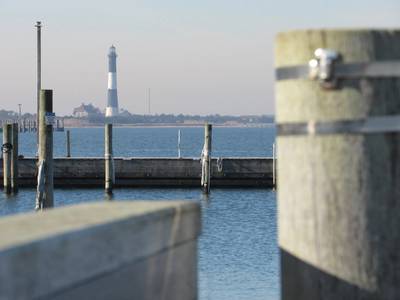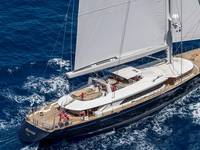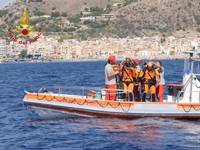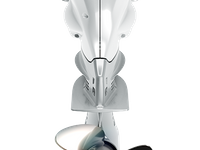The Benefits of Sustainable Marine Lumber
Today’s marinas are held to a higher standard of environmental stewardship than in the past. No longer are they just responsible for the environmental impacts of their day-to-day operations, but also of their infrastructure and how it affects both the oceans, waterways and their delicate marine ecosystems. For these reasons, many marinas are being far more selective as to construction materials being specified for their expansion and/or restoration projects.
One material that is rising to the top for its eco-friendly and performance attributes is sustainable marine lumber. Understanding why this hardwood is replacing some of the traditional lumbers and newer materials being applied, is important for all public works directors, harbor masters, engineers working in the marina market and marine operators.
History of sustainability in the marine environment
Sustainable marine lumber has its roots in sustainable development which has its earliest ties to the industrial revolution when awareness of how economic development activities affect the environment began. While there were no regulations to enforce eco-friendly policies then, there are now in the form of various laws such as the National Environmental Policy Act of 1969 and The Clean Water Act of 1972. It wasn’t, however, until some very high profile maritime incidents that water-related environmental protection mandates really gained momentum. It began with the 1967 Torey Canyon oil spill off the United Kingdom’s southwest coast and the 1969 Union oil spill into the Santa Barbara Channel (California). It culminated in the 1989 Exxon Valdez incident, which spilled 10.8 million U.S. gallons of crude oil in Prince William Sound, Alaska, impacting 1,300 miles of Alaskan shoreline and killed much of its native wildlife. The Valdez spill prompted the passage of the Oil Pollution Act of 1990, which increased penalties for companies responsible for oils and required oil tankers operating in United States waters to have a double hull. In 2010, an explosion of the oil drilling rig, the Deepwater Horizon, would surpass the volume of oil spilled by the Valdez, releasing over 200 million gallons of crude oil into the Gulf of Mexico over a period of 87 days, affecting some 16,000 miles of coastline in Texas, Louisiana, Mississippi, Alabama and Florida.
For any marine-based operation, including marinas, these and other ecological crises led to increased regulation and expected due diligence relating to operations, as well as marina site planning, design and construction. In addition to operations and management policies instituted under the Coastal Zone Act Reauthorization Amendments of 1990, under which marinas are expected to control the addition of pollutants in coastal waters, there are regulations from both federal and state agencies. These agencies, operating to uphold The Clean Water Act and its components (e.g., the National Pollutant Discharge Elimination System (NPDES)), provide direction on what is and isn’t permissible relating to a marina’s design and construction. Guidance is provided as to changes in the physical configuration and/or construction of a marina among other things. This guidance is provided through the Coastal Nonpoint Pollution Control Program, a joint effort of the U.S. Environmental Protection Agency (EPA) and the National Oceanic and Atmospheric Administration (NOAA) of the U.S. Department of Commerce. Additionally, there is the Permanent International Commission for the Navigation Congresses (PIANC), which is regarded as the leading international source of engineering, economic and environmental knowledge and technical guidance for sustainable development and management of ports, marinas, waterways, marine transportation and navigation. Its Working with Nature white paper outlines a process whereby “win-win” solutions for projects and the environment are offered.
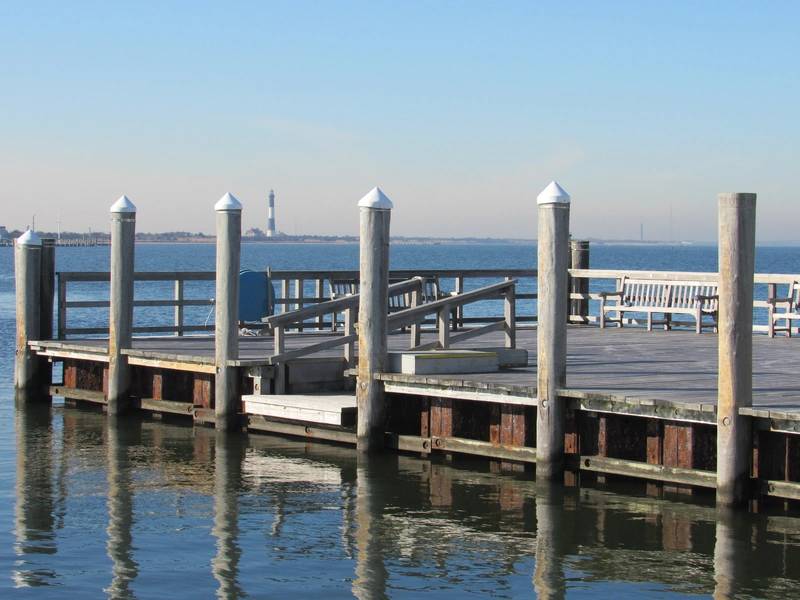 (Photo: Evergreen Forest Products)
(Photo: Evergreen Forest Products)
Marina construction materials
While each marina project is reviewed individually, in all instances, regulators consider a project’s potential to negatively affect water quality and its habitat.(i.e., fish, shellfish and wildlife). A key aspect of any marina project is its construction materials which have been steadily evolving.
When it comes to marina design and construction, one of the guidelines given is to use environmentally-preferred materials for new pilings and other structures that lie in or above the water. This encompasses materials that do not “leach” hazardous chemicals into the water or degrade in under ten years, for example, reinforced concrete, coated steel, recycled plastic and fiber-glass reinforced plastics (i.e., composites). An obvious omission to those who are aware of it is sustainable marine lumber. The reason is that many are under the false impression that sustainable marine lumbers are harvested in a way that harms tropical forests. This could not be further from the truth.
Sustainable marine lumber
Suppliers of sustainable marine lumber are fully-committed to preserving our earth’s natural resources and to the responsible harvesting of tropical woods ideally suited to the marina environment. Many of their products are Forest Stewardship Council (FSC C117772) Certified indicating they have been harvested from forests that are responsibly managed from an environmental, social and economic standpoint. These products offer several distinct features that benefit the marina environment and, when used in a sound design, are aligned with the goals of “engineering with nature” and eco-friendly marina construction.
Greenheart Wood vs. other construction materials
Probably the best known and widely-used sustainable marine lumber is Greenheart Wood, also known as Sipiri. Harvested from Guyana, it has gained the respect of engineers and others specifying materials for marina and waterfront projects. It is especially favored for its high strength and durability, as well as for being pest and marine borer resistant and almost completely immune to rot. As a result, it requires minimal maintenance and poses no risk of toxic chemicals entering the water. This is in direct contrast to soft woods like pine which are prone to rot, decay, mold, algae and fungi growth and do not withstand insect attacks. As such, these soft woods require a lot of maintenance (regular sealing) and still are known to splinter overtime.
As for composites, they are not maintenance-free as was once widely-claimed, but subsequently settled via class-action litigation. They also can be costly and from a liability standpoint, slippery in a wet environment such as a marina. Furthermore, life cycle assessments indicate that these composite products have higher environmental impacts when compared to natural, durable solid wood products. Neither softwoods nor composites have the lifespan that sustainable marine hardwoods have. For instance, where Greenheart has proven to last in excess of 75 years, these materials have a typical lifespan of 25 years. This long lifespan, which minimizes disruption to the wetlands and marine ecosystems that develop below, around and on marina structures, is one of the most significant sustainability attributes of marine lumber such as Greenheart. For instance, depending on the location, the pilings of many East Coast marina structures are coated with living organisms ranging from corals, sponges, tunicates and sea anemones which, in turn, are the natural habitats for fish including crabs, lobsters, blackfish, fluke and striped bass. Gulf Stream marinas may be providing shelter to grouper, angelfish, triggerfish and butterfly fish. Sea turtles, dolphins and even manatees can be found in the waters around Gulf Coast, Florida marinas.
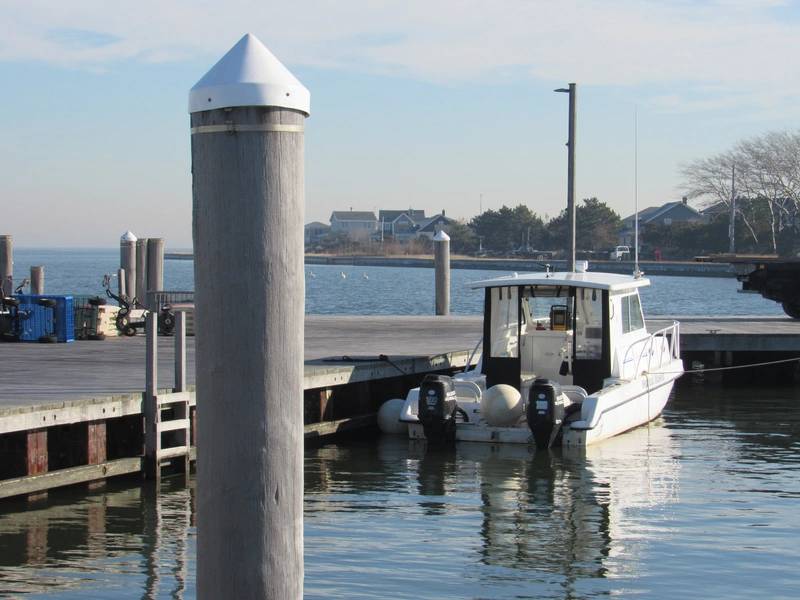 (Photo: Evergreen Forest Products)
(Photo: Evergreen Forest Products)
Marina engineering and construction considerations
For engineers specifying construction materials for marina environments, Greenheart’s specifications are as follows:
- Air dried density (12%) of 970 kg/m3 (kilogram / cubic meter),
- Bending strength (at 12%) of 240 N/mm²,
- Modulus of elasticity (at 12%) of 24500 N/mm². and
- Compression parallel to grain is 89.9 N/mm² and its crushing strength (at 12%) is 98 N/mm².
Its durability and resistance to virtually all insect attacks have made Greenheart one of the best woods for coastal environments and particularly for dock pilings, piers, lock gates, dock and harbor works. It is well-suited for pier decking, handrails and flooring, and weathers very well in wet locations. It also holds a Class “A” Fire Rating owing to it being highly resistant to fire and a material that does not spread flames quickly
Aesthetically, Greenheart has a fine to medium fine grain which varies from straight to interlocking with an attractive natural luster. Its heartwood is typically a pale olive green shade, often accented with darker streaking and the sapwood is yellowish green, making it somewhat difficult to distinguish from the heartwood.
On the construction side, working with Greenheart requires power with the blunting effect being moderate to high. This hardwood turns well and, despite its high density and interlock grain, planning is not difficult. It is fairly easy to glue and holds nails well although pre-boring is recommended for nails and screws. Because of its natural luster, staining is rarely needed and it polishes well—another reason this sustainable marine hardwood is becoming a popular choice for marinas and other waterfront environments.
The Author
Gary Poserina is Chief Financial Officer of Evergreen Forest Products, based in Wading River, N,Y.
